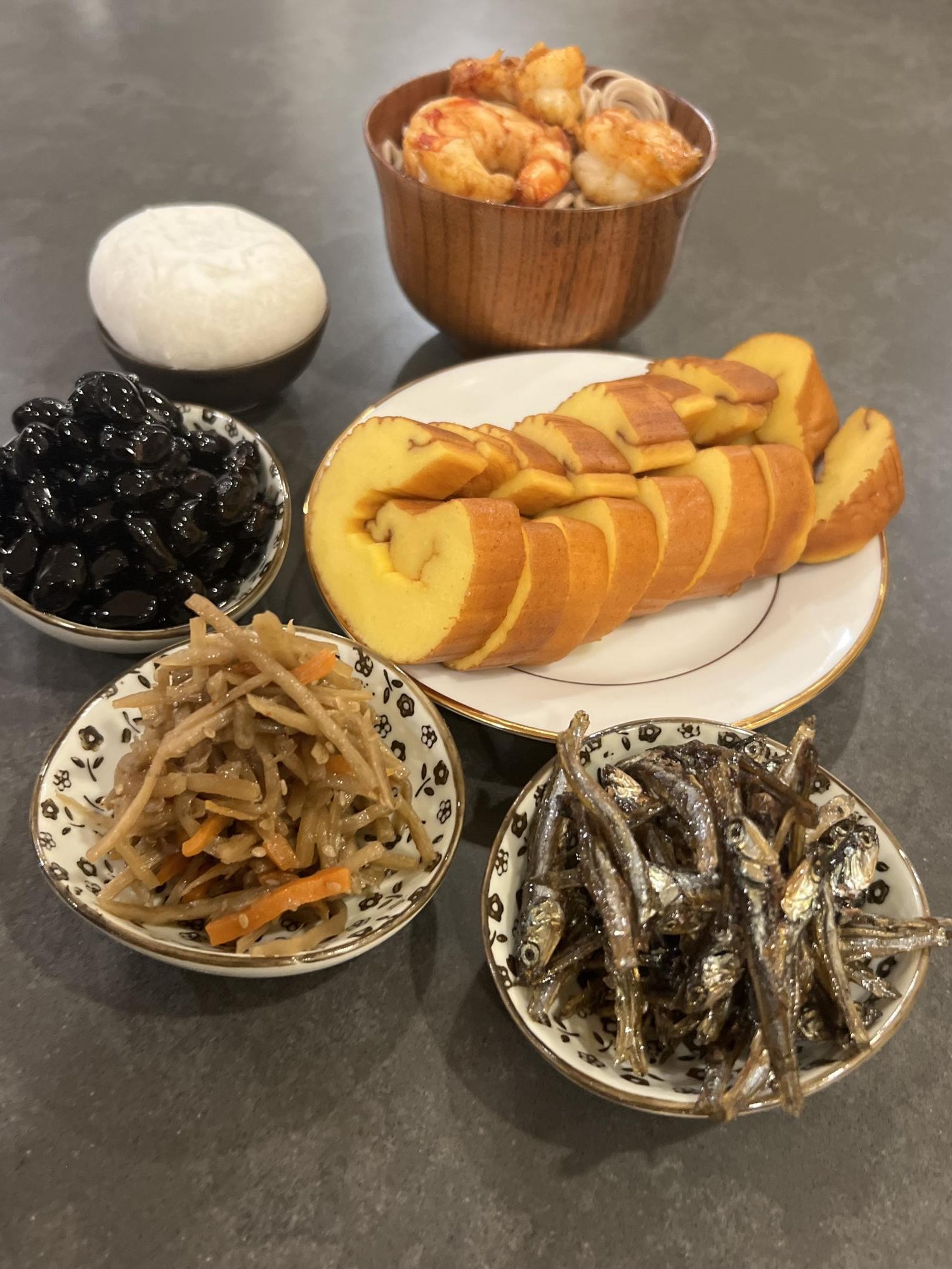People around the world celebrate the new year with food. I welcomed 2025 by spending the first 24 hours of 2025 trying a different New Year’s food at every meal.
I started my journey on New Years Eve buying traditional Marzipan from a local German store, Edelweiss Delicatessen, located in Southeast Portland.
I talked to an employee in the store about traditional German New Year’s food and she directed me to Marzipan, a candy made out of sugar and almond paste, in the shape of a pig. I also picked up some wine cured salami in the shape of a pig, both the salami and the pig symbolize good luck.
According to the Universiteit Leiden, a Marzipan pig is given as a good luck charm and as a sign of wealth with its origins dating back to ancient board games where the pig was used as a lucky piece.
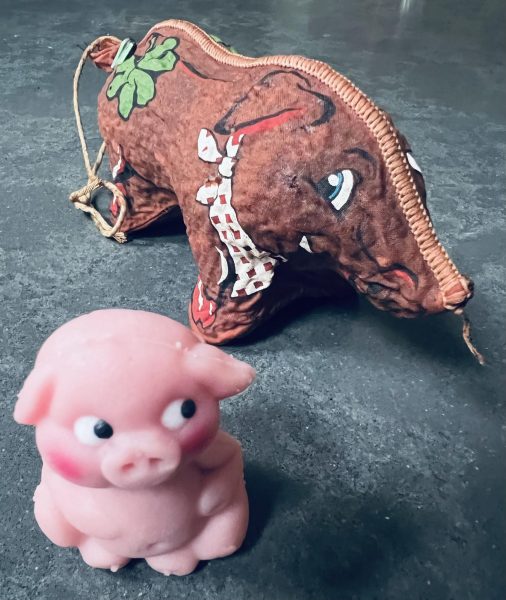
Photo by Lucas Kugel
On the morning of New Year’s Day I made Kiribath, or Sri Lankan milk rice.
Kiribath is made by boiling coconut milk and rice. The dish is made to welcome the New Year and celebrate special days and is a symbol of abundance and prosperity. Kiribath can be served with caramelized onions called Seeni Sambol. For a sweet twist, you can add brown sugar (my personal favorite).
Kiribath is generally served by cutting the rice into blocks and adding the savory and sweet sides. The most authentic way to consume it is by eating with your hands. Traditional Sri Lankan New Year is celebrated during April using Sri Lankan astrology. The dish is made during both New Years.
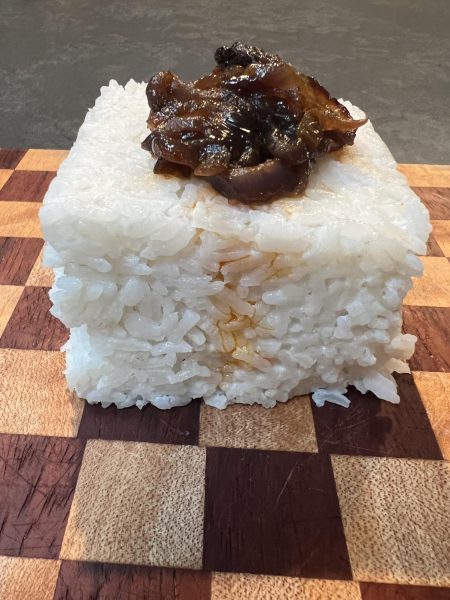
Photo by Lucas Kugel
To celebrate lunch on New Year’s Day I picked up some Japanese food items from Uwajimaya, a local Asian grocery store.
The store had a special New Year’s food section that displays information about how Japanese people use food to celebrate New Year’s. According to the display, Japanese people use different Osechi dishes to craft an Osechi Ryori, a New Year’s Good Luck meal.
The different Osechi dishes feature vibrant colors and symbolic shapes and each one represents something special. For example, the Kuromame (sweetened black beans) are eaten for good health, while the Datemaki (sweet omelet ) represents educational prosperity because of their scroll-shaped figure.
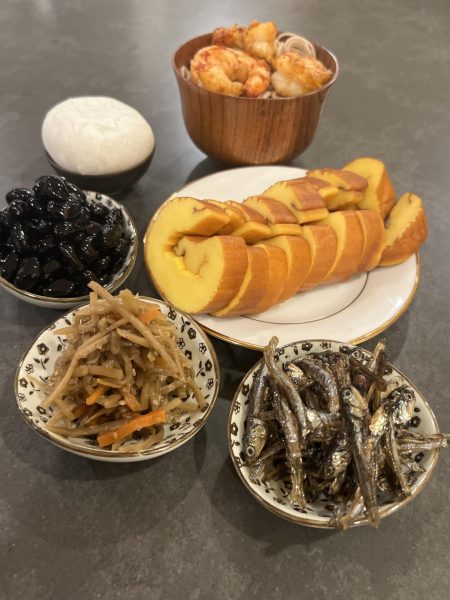
Photo by Lucas Kugel
For dinner on New Year’s Day, I wanted to celebrate Mexican culture, so I stopped by a local Mexican store called Salsa Market.
I picked up three types of Tamales: pollo (chicken), jalapeño con queso (cheese and jalapeño), and cerdo (pork). According to Goldilocks Kitchen, the corn masa in a Tamale represents wealth, while the meat filling represents the drive to complete things. The Tamale itself represents family unity.
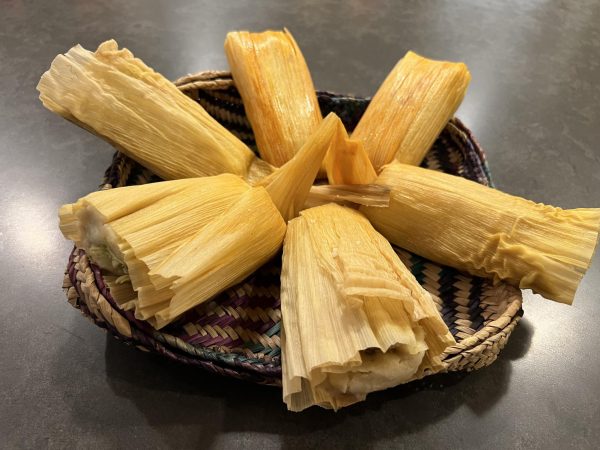
Photo by Lucas Kugel
I wondered what other Lincoln students and staff ate to celebrate New Year’s.
Junior Miguel Oliva welcomes the New Year with a traditional Czech dish called Obložené Chlebíčky. This dish is generally made like an open-faced sandwich using a baguette-like bread.
“They can be customized to your preference, with meat, vegetables, egg, and some sort of spread,” said Olivia.
Making Obložené Chlebíčky is a family effort.
“Everyone in the family contributes and helps make the dish. We pretty much make a distribution line with each person taking on a step in the construction of the Chlebíčky,” said Olivia. “We’ll make from 50 to 300 depending on the amount of people we have over.”
Spanish teacher Noemi Avendaño Gomez welcomes the new year with her family, making Tamales. Gomez’s mother makes the masa, while the rest of the family helps to complete the process.
Her family also makes Pozole a soup made from Hominy, meat, and a variety of vegetables and spices.
“[Making tamales] is a sweet bonding moment,” said Gomez. “One of the best times is sharing a meal that we make together.”
The New Year is a time that can be shared with family, friends, and good food.


